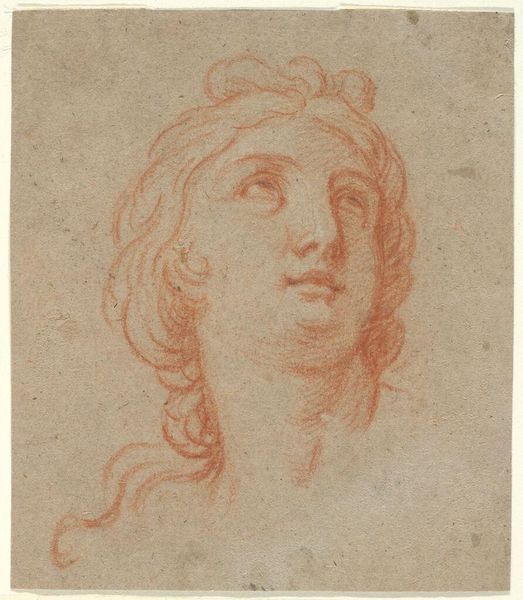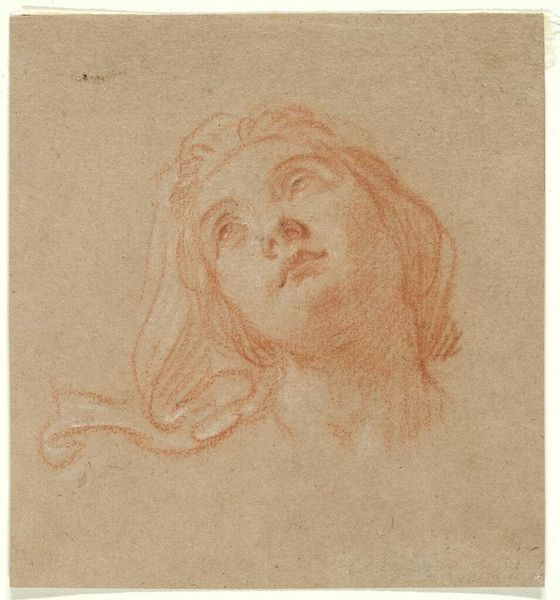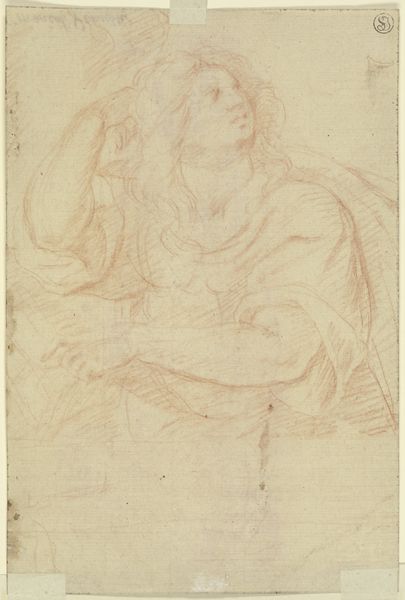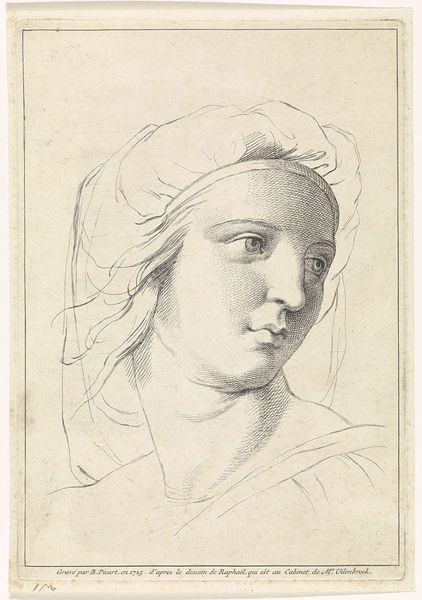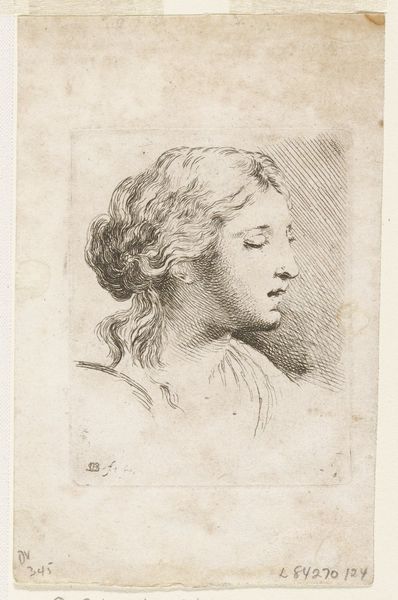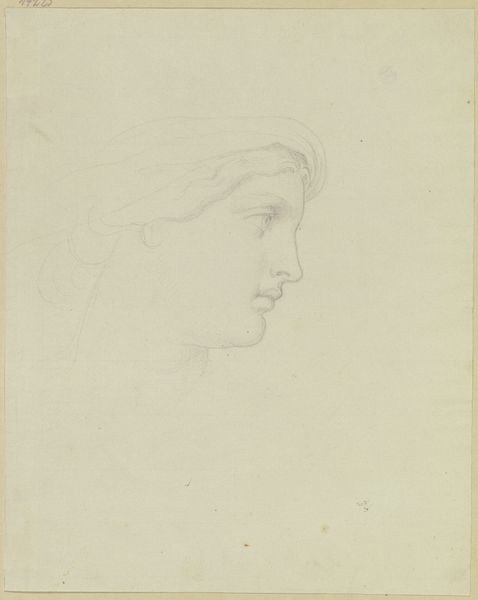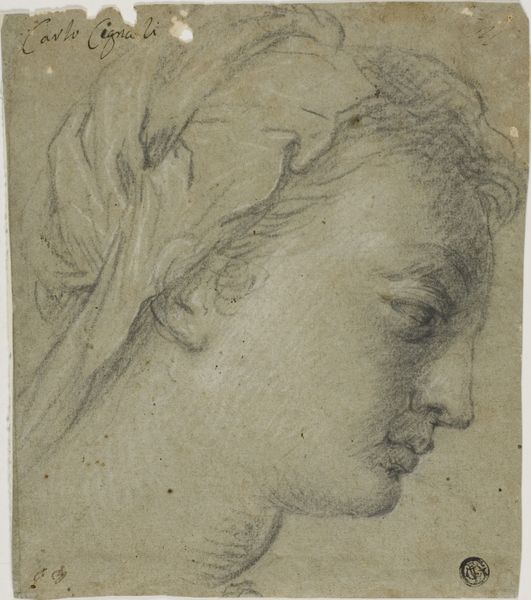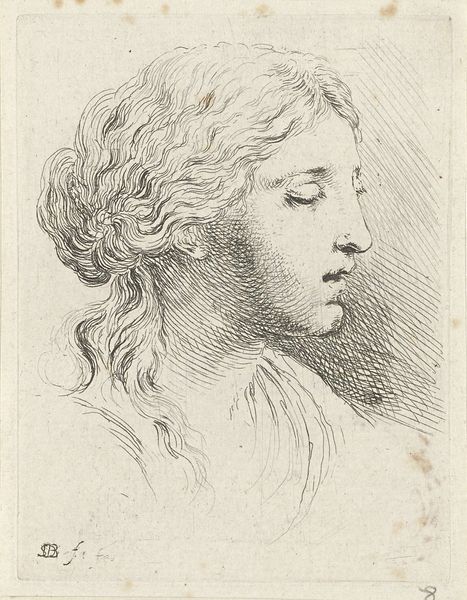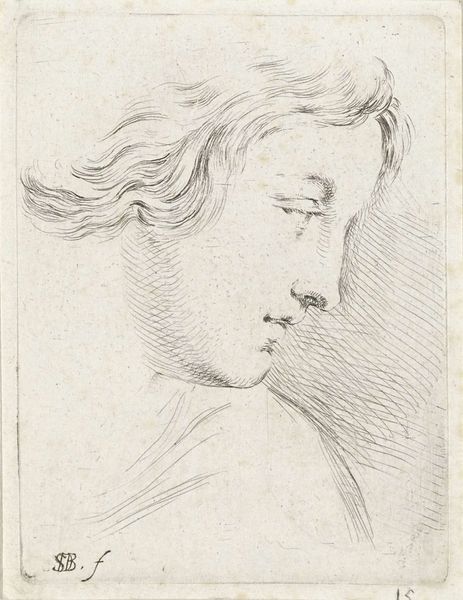
drawing, pencil
#
portrait
#
pencil drawn
#
drawing
#
aged paper
#
toned paper
#
light pencil work
#
baroque
#
pencil sketch
#
sketch book
#
figuration
#
personal sketchbook
#
pencil
#
sketchbook drawing
#
pencil work
#
musical-instrument
#
academic-art
#
sketchbook art
Dimensions: height 201 mm, width 186 mm
Copyright: Rijks Museum: Open Domain
Curator: What a poignant sketch. This is "Studie voor het hoofd van een Maria Magdalena" by Niccolò Berrettoni, created sometime between 1647 and 1682. It's a delicate pencil drawing, seemingly on toned paper. Editor: It's remarkably ethereal, isn't it? There's a soft luminescence to it, achieved with the very subtle pencil work. Her upward gaze evokes a sense of longing, almost reverie. Curator: I agree. Berrettoni was working within the broader context of Baroque art, of course, and it is interesting to consider how even a study like this shows a piece of the wider production process, even if it never made its way into a larger work. The toned paper itself adds a layer, perhaps influencing the artist’s hand, not to mention what pencils were available to them in the 17th century, a far cry from what we have now. Editor: The tonal range achieved solely with pencil is astounding. Notice how he suggests the fall of light on her cheek and the soft modeling of her neck simply through the density of the lines. There's a visual harmony at play between the subject, the medium, and its technical rendering. Curator: And thinking of materiality further, the drawing, in its creation, acts as this trace of physical labor; an insight into the academic style, where careful studies like these were a crucial step in artistic training. Consider how the accessibility to quality paper and pencils would impact his overall practice, and ultimately, what type of artistic projects he would be hired for. Editor: Right, and her gently upturned face and flowing hair—it all serves the thematic element, connecting visual forms and the conceptual idea of, in this instance, devout beauty. Curator: This work demonstrates just how entwined artistic vision and material realities are. It serves as an artifact of artistic and economic relationships of its time. Editor: Yes, in essence it brings to light how integral technique, medium, and subject are in shaping art. Niccolò Berrettoni understood, I think, that form could be used to engage a particular vision, if you will. Curator: Considering it all then, from pencils to paper, the cultural values around artistic education, these elements serve as a point of connection through which one might contemplate Baroque aesthetics. Editor: Precisely. In that light, one might gain an experience or a way to feel some fraction of the beauty from across time.
Comments
No comments
Be the first to comment and join the conversation on the ultimate creative platform.
